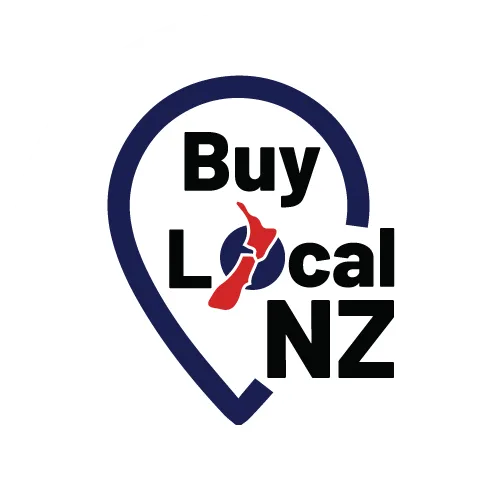
How To Write Blog Posts Customers Actually Read
You'll boost reader engagement by understanding your target audience's core needs and challenges first. Create headlines that showcase clear benefits and hook readers with compelling opening lines that spark curiosity. Break up your content into scannable sections with short paragraphs and bullet points, while weaving in authentic stories that resonate. Focus on delivering practical, actionable tips your audience can implement right away. Let's explore exactly how to put these strategies into practice.
Know Your Target Reader Inside and Out
Success in blogging starts with understanding exactly who you're writing for. This means diving deep into your ideal reader's mindset - their dreams, fears, challenges, and burning desires.
You need to grasp what keeps them up at night and what they're struggling to achieve. Create a detailed reader persona that captures their age, career, lifestyle, and values.
What websites do they visit? Which social media platforms do they prefer? What language and tone resonate with them? Understanding these elements helps you craft content that speaks directly to their needs.
Don't just guess - engage with your target audience through surveys, comments, and social media. Listen to their questions and pain points.
When you truly know your reader, you'll naturally write content that draws them in and keeps them coming back.
Craft Headlines That Stop the Scroll
Your headline needs to instantly communicate what readers will gain from your blog post, making the value proposition crystal clear in those essential first words.
Start with action-oriented benefits like "Build," "Create," or "Transform" to grab attention and promise specific results.
Adding numbers to your headlines, such as "7 Ways" or "5 Steps," can increase click-through rates by up to 36% because they set clear expectations and make content feel more manageable.
Clear Benefits First
Powerful headlines make readers stop scrolling and start clicking.
But once you've captured their attention, you need to immediately show them why your content matters to their lives. Don't bury the good stuff - lead with it.
Start your post by clearly stating how readers will benefit from the information you're about to share. Will they save time? Make more money? Feel more confident? Tell them right away.
Frame these benefits as transformational outcomes that liberate them from their current challenges.
For example, instead of starting with background information about email marketing, open with: "You'll discover how to double your open rates in the next 30 days, even if you're starting from zero."
This instantly communicates value and motivates continued reading.
Numbers Grab Attention
Adding numbers to your headlines can increase click-through rates by up to 36%, according to recent studies. Your readers crave specific, measurable outcomes that break free from vague promises. Numbers provide instant credibility and set clear expectations.
Transform bland headlines into magnetic ones by incorporating statistics, percentages, or quantities. Instead of "Ways to Save Money," write "7 Unconventional Ways to Save $500 This Month." Rather than "Tips for Better Sleep," try "5 Science-Backed Methods to Fall Asleep in Under 10 Minutes."
Numbers also help structure your content and make it scannable. When readers see "3 Steps" or "10 Tips," they know exactly what they're getting into.
This transparency builds trust and empowers them to make informed decisions about investing their time in your content.
Hook Readers With Your Opening Lines
When readers land on your blog post, you've got mere seconds to grab their attention before they click away.
Your opening lines need to spark curiosity, create tension, or promise value that compels them to keep reading. Start with a provocative question, a startling statistic, or a bold statement that challenges conventional wisdom.
Share a compelling personal story that resonates with your readers' struggles. Paint a vivid picture of their pain points or aspirations to show you understand their journey.
Avoid generic introductions that waste precious time. Cut straight to the heart of what matters to your audience.
Make every word count. Your opening paragraph should make readers feel like they've discovered exactly what they've been searching for - and that breaking free from their challenges starts right here.
Break Up Content for Easy Reading
Breaking up your blog content into digestible chunks makes it considerably easier for readers to consume and understand your message.
You'll want to incorporate plenty of white space, strategic bullet points, and organised lists to help guide readers through your post.
Keep your paragraphs brief—typically 2-3 sentences—to prevent overwhelming your audience with dense blocks of text.
Use White Space Effectively
White space plays an important role in making your blog posts more readable and engaging.
When you break up dense text with generous spacing between paragraphs, headings, and bullet points, you give your readers' eyes a chance to rest and process information.
Don't be afraid to let your content breathe. Embrace short paragraphs of 2-3 sentences, and leave plenty of margin space around your text.
Strategic use of white space helps readers scan and absorb your message without feeling overwhelmed.
Add extra line breaks between key ideas, and use indentation to highlight important points.
Your readers will thank you for creating a clean, uncluttered layout that respects their time and energy.
Add Bullets and Lists
Bullets and lists serve as powerful visual tools to organise your blog content. They break up dense text blocks into digestible chunks, making your message crystal clear and empowering readers to absorb information quickly.
To maximise the impact of your lists:
Keep items short and punchy
Start each bullet with action words
Maintain parallel structure
Limit list items to 5-7 points
Use numbers for sequential steps
Choose bullets for non-sequential items
Don't be afraid to mix up your formatting. You can indent sub-bullets, combine numbered and bulleted lists, or create checklists that readers can mentally tick off.
Keep Paragraphs Short
When readers encounter massive walls of text, they typically bounce from your blog within seconds. You'll keep them engaged by breaking up your content into shorter, digestible paragraphs of 2-4 lines each.
Text ElementImpactReader ResponseLong ParagraphsOverwhelmingQuick ExitShort ParagraphsInvitingContinued ReadingSingle SentencesDramaticStrong EmphasisWhite SpaceBreathing RoomMental RestMixed LengthsDynamic FlowEnhanced Interest
Think of your paragraphs as stepping stones across a stream. Each one should give readers a comfortable place to pause before moving forward. Break free from traditional academic writing rules - you're not writing a dissertation. Let your ideas breathe with plenty of white space, and watch your engagement metrics soar.
Tell Stories That Connect and Convert
Stories captivate readers and forge meaningful connections that turn casual browsers into loyal followers. When you share authentic experiences, struggles, and triumphs, you create trust and relatability with your audience.
Start by identifying pivotal moments in your journey that align with your readers' challenges. Share how you overcame obstacles, learned valuable lessons, or discovered breakthrough solutions.
Focus on emotional touchpoints that resonate with your audience's desires and pain points.
Structure your stories with a clear beginning, conflict, and resolution. Include specific details that paint vivid pictures in readers' minds.
Remember to tie each story back to actionable takeaways that empower your audience to achieve their goals. By weaving compelling narratives throughout your posts, you'll create content that not only engages but also inspires real transformation.
Add Value With Actionable Tips
Delivering actionable tips transforms your blog posts from basic information into practical resources that readers can immediately implement.
When you provide specific steps, tools, and techniques, you empower your audience to take control of their challenges and achieve real results.
Make your content work harder by giving readers exactly what they need to succeed.
Break down complex solutions into bite-sized, manageable steps that readers can tackle one at a time.
Include specific examples, tools, templates, or frameworks that remove guesswork and accelerate implementation.
Create quick-win opportunities by highlighting actions readers can take within minutes of finishing your post.
Remember to focus on solutions that align with your readers' skill levels and available resources.
Your goal is to spark immediate action and build momentum toward meaningful change.
End With Clear Next Steps
Three key ingredients make a strong blog post ending: a clear call-to-action, next steps for implementation, and related resources for further learning.
Don't leave your readers hanging - empower them to take immediate action on your insights.
Your call-to-action should directly connect to your post's main message. If you've written about productivity tools, invite readers to try one specific tool.
For implementation, break down the very next action into a simple step they can take in 5 minutes or less.
Finally, curate 2-3 high-quality resources that deepen their understanding. Link to relevant studies, tools, or complementary blog posts that support their journey.
FAQs
How Long Should My Blog Posts Be for Maximum Engagement?
You'll want posts between 1,500-2,500 words to rank well and engage readers. But quality matters more than length - make every word count and deliver real value to your audience.
What Tools Can I Use to Measure Blog Post Performance?
You'll gain valuable insights using Google Analytics, Ahrefs, BuzzSumo, and SEMrush to track page views, time on page, social shares, bounce rates, and search rankings for your blog posts.
Should I Focus on SEO Keywords or Natural Writing Flow?
Balance both SEO and natural flow - they're equally essential. You're writing for real people first, search engines second. Let keywords guide your topic, but don't sacrifice readability for optimisation.
How Often Should I Publish New Blog Content?
You'll get better results posting 1-2 quality articles weekly than rushing daily content. Stay consistent with your schedule and don't burn out trying to match competitors' posting frequency.
When Is the Best Time to Post Blogs for Higher Visibility?
You'll catch more readers by posting early mornings (8-11am) on weekdays, especially Tuesdays and Thursdays. Break free from weekend posts, when your target audience isn't actively seeking professional content.
In Summary
Picture your blog post as a well-laid path through a garden - drawing readers in with eye-catching headlines, keeping them engaged with compelling stories, and guiding them naturally toward your call-to-action. When you craft content that truly resonates with your target audience, they'll keenly follow your words to the end. Now it's time to put these techniques into practice and watch your readership bloom.

